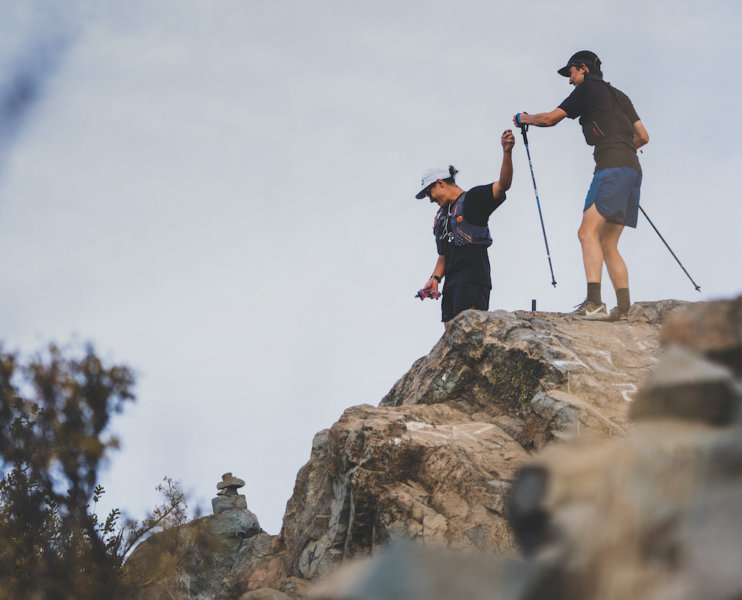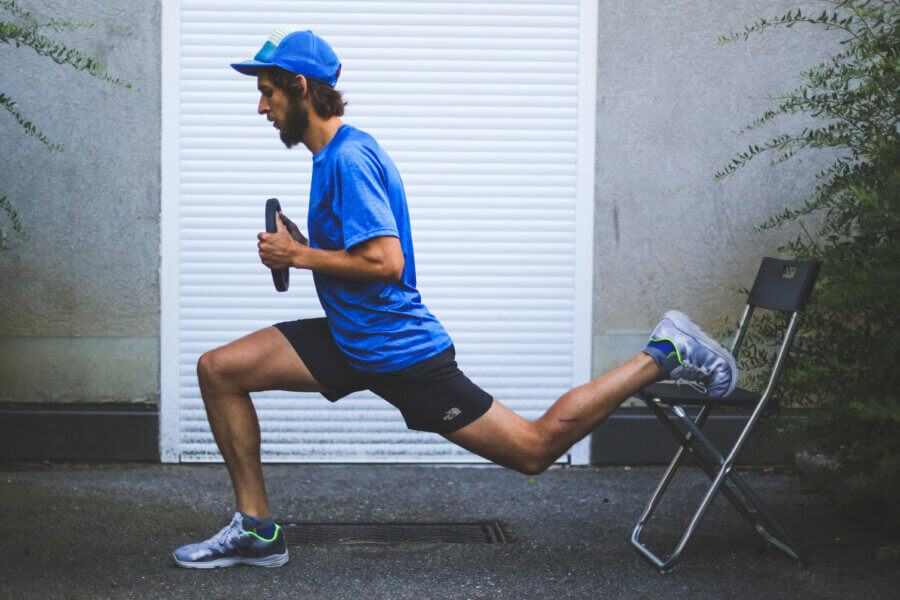Giving birth is the last piece of cake of pregnancy. Of course, every minute counts during labor just as every day counts for that 39 weeks of pregnancy. But you have already come so far. This fact gives you faith and courage even though you cannot predict if things would happen exactly as you have wished for.
For the past 39 weeks, I was running like a blind runner in the sense that I couldn’t see what was happening inside the womb. Each and every trimester – first, second, and third – has its own risk factors to take into account when I decided to continue running. Each day when I put on my running shoes, there was always the same question, ‘is it good for me and my baby?’. As discussed in my previous articles, more scientific research would help guiding pregnant runners more objectively. Yet, for the time being what I could do as a female trail runner was to listen to my body. I knew that my body has been trained well before pregnancy and I could possibly continue running under the changed and restricted circumstances.
Certainly, the easiest thing to do is to stop. Don’t run because people tell you that it is insane; don’t run because you had a bad day; don’t run because you wanted to keep records less ‘complicated’ between you and your doctor or trainer. Listening to these voices would undoubtedly protect me from ANY risk factor. However, it is not without a dark side. I knew the decision of not to run at all will cast a shadow on my health, mood, and general fitness throughout the pregnancy.
I am not born and raised in Hong Kong, so often I was told I that can run during pregnancy because I am a ‘gweipor’ whose culture allows more freedom. Yet, this is not the truth. As far as I know, there is no culture, not even one in the West which promotes activity during pregnancy, not to say running on trails where one can slip easily and get out of support in case of emergency. Female runners share the same heritage and past. However, I believe, “how pregnancy should be” has been evolving.
The way of transforming pregnancy experience by trail runners is to listen to our body. However, this is not as easy as it sounds. Indeed, there were times I went running with great discomfort due to the urge of frequent urination or sour muscles. I did not always know if these were signs to stop running at all or it just happened because I did not sleep or eat well or these were just normal inevitable symptoms of pregnancy.
You might wonder why I still keep running the day after and after with such uncertainty. I think it is because I have learned that trail running, even in normal circumstances is about accepting and living with discomfort. If after the check-up, my OB said the placenta is big enough meaning the baby has enough space while I am running, I knew that the bad day on trail was about something else. The run was safe. I knew that the fact that I keep running throughout the nine months helps the embryo to get used to movements occurs during running. These are important information you are dealing with when you decide to work out nonetheless what people expect you to do.
Throughout the history of trail and ultrarunning, the finishing rate has never been as high as it could be. We want to improve that. We want to help as many runners as possible–of all experience levels–achieve that feeling of accomplishment, self confidence and pride that comes with reaching their finish line feeling strong.
We know that by training with Vert.run, a runner’s chances of finishing their trail race or ultramarathon are high. We have proven that with the thousands of runners who have excelled with our innovative training and coaching services.
With our $25/month training and coaching subscription, not only do runners get access to a training plan designed specifically for their race–with workouts handcrafted for their distance–but they also get access to personal coaching support from the Vert.run coach on a weekly basis.
This is the end of my journey as a pregnant runner. My daughter, Noemi was born on 16 April and she is healthy and beautiful as a newborn can be. Certainly, I could not ask for more.
Yet, running and motherhood are a never-ending, ongoing journey. The cherry on the cake is the period after birth. A new period with its own questions: When can I exercise again? When it is safe to run again? Is it safe to push myself, if yes for how long? I have questions about the mental and physical impacts on going back to exercise early or the need your body seeks as it used to work out. But this is the next chapter, for now, I am happy that it went all well.
I would like I finish this series with the following list of articles I have found useful during my journey as a pregnant runner. It is not comprehensive, but it will be my pleasure if this could help out female trail runners who are interested in this topic. It was great to encounter and receive messages from various mothers or pregnant trail runners during these months. Together we can support each other, by sharing our stories we can connect and help which is why ATG has been such a great platform.
Articles for your information
- Mikaela Gravida story.
- Running while pregnant.
- Tips for trail running through pregnancy.
- Pregnant Running.
- Long-distance running during pregnancy.
- Safety of hot yoga for pregnant women.
- Running during pregnancy.
- WSER Pregnancy deferrals.
- Emilie Forsberg Training during pregnancy.
- BBC Worlds US.
- Training tips while pregnant.
- Busting 6 myths about running while pregnant.
- Running while pregnant.
- Ultra running while pregnant.







